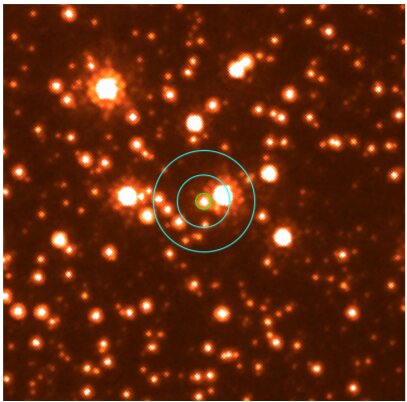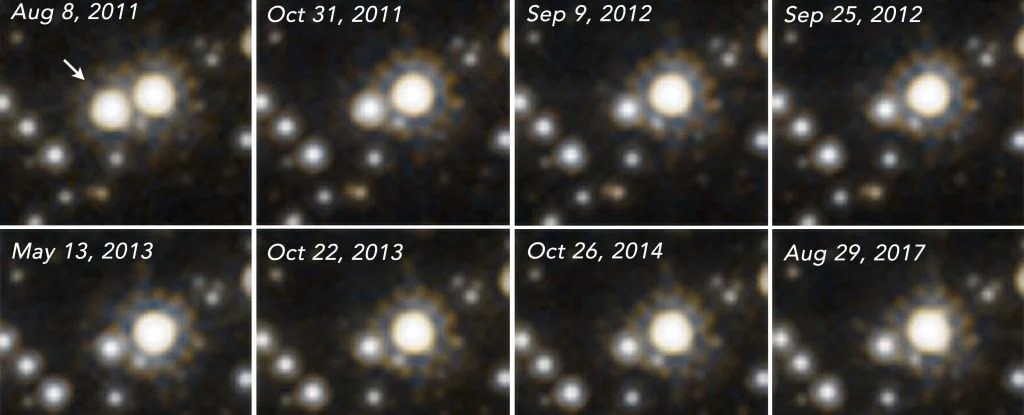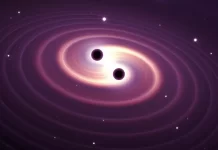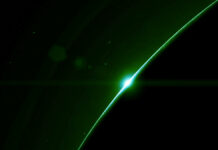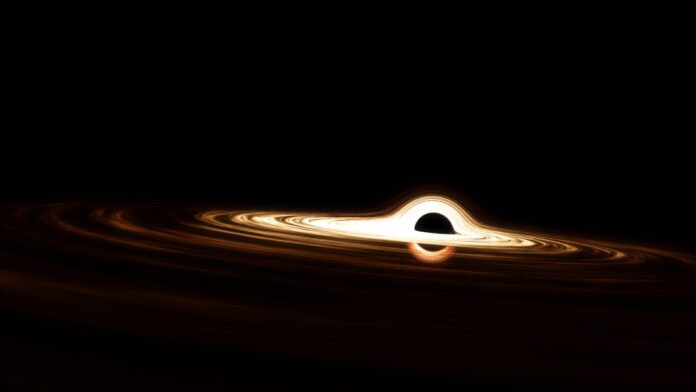
An international team of scientists has determined that a probable microlensing event observed in 2011 was caused by the presence of a Black Hole discovered wandering through the milky way. On the arXiv preprint service, the group has released a paper explaining their findings. Learn more
What does The Research say?
Scientists have long speculated that many black holes are floating around in interstellar space. This is owing to the nature of black holes, which are difficult to detect against the black background of space. Nonetheless, the evidence for their existence was compelling. The previous study has indicated that black holes are frequently generated when stars reach the end of their life and their cores collapse, resulting in a supernova explosion. Because so many supernovae have been observed, it seemed obvious that many black holes must have been generated as a result.
However, locating them has necessitated the search for lensing effects, which occur when light from stars is twisted by the gravitational pull of a black hole. Given the enormous distances, the lensing effect is so tiny that it is practically impossible to detect with even the most advanced contemporary telescopes. However, in 2011, two project teams seeking such lensing stumbled onto a star that looked to brighten for no apparent cause. Intriguingly, the researchers behind this new project began analyzing Hubble data. They watched the light change for six years, hoping that it was due to magnification from a black hole.
Then they discovered something else: the star’s position appeared to change. According to the researchers, the change could only be due to an unseen moving object exerting a force on the light as it passed by—an interstellar black hole. The researchers kept studying the star and its light until they ruled out the possibility of any light coming from the lensing and confirmed that the magnification had a long duration, both of which are required to confirm the existence of a black hole. Taken together, the data is compelling enough to support the discovery of a free-floating black hole. The astronomers were even able to calculate its mass, which was seven solar masses. They also discovered that it travels at a speed of about 45 kilometers per second.
Explaining the Research Further
The black hole itself does not have a name, but the event that led to its discovery is known as MOA-2011-BLG-191/OGLE-2011-BLG-0462. If confirmed, it has a mass around seven times that of the Sun and is located approximately 5,000 light-years away. Below Image explaining the detected black hole.
In 2001, the Hubble Space Telescope captured an image of a star that had been distorted by an isolated black hole (central circle in the above image). It is located in a dense field of stars around the galactic center, where it is best positioned to see a gravitational lensing event. A few dozen black holes have been discovered in our Milky Way galaxy, with the majority of them currently awaiting confirmation. Because black holes are dark, they don’t emit light of their own, making them difficult to detect.
They can be identified by the effects they have on the objects and materials surrounding them. The matter that falls in warms up and can generate massive amounts of energy, making them extremely brilliant. Most local black holes are discovered when they orbit a star, such as the Sun. In addition, when black holes clash and merge, they generate gravitational waves, and scores of them have been discovered this way, despite being billions of light-years away.
Isolated local black holes are thus significantly more difficult to detect. There are probably hundreds of millions of such black holes in the Milky Way, but space is vast, the black holes are dark, and detecting them is tough. But it’s not impossible. Another method they disclose their presence is by gravitational lensing, therefore scientists use gravitational lensing.
When a single little item does this, this is referred to as microlensing. If a black hole, for example, passes between us and a star, the star’s image is doubled and amplified, and its position in the sky is bent somewhat by the lensing. Both of these can theoretically be measured if the effect is strong enough.
Astronomers developed surveys such as the Microlensing Observations in Astrophysics (MOA) and the Optical Gravitational Lensing Experiment (OGLE) to essentially stare at one spot in the sky with a lot of stars — for example, toward the bulge of stars in the center of our galaxy — to maximize the chance of detecting a lensing event.
In 2011, MOA and OGLE both observed the same one. A star roughly 19,000 light-years from Earth began to shine brightly amid a dense stellar field near the galactic center. Plotting the light curve, which is a graph of the star’s brightness over time, it took over 270 days for the star to brighten and fade, and at its peak, the light from the star was magnified by a whopping factor of about 370 times.
The gravitational lens event’s light curve (a graph of brightness over time) is observed by more than a dozen observatories. The entire event lasted roughly 300 days (the x-axis is measured in days using a standard astronomical scale known as Julian Days).
The light curve form and duration of the event assist to pin down much of the physics, but to fully nail things down, the astronomers utilized Hubble Space Telescope to study the star 8 times during the lensing event. They saw a distinct reflection of the star’s location by about 5 milliarcseconds.
Hubble photographs of the gravitationally lensed star faded over time as the black hole passed and its amplification decreased. All of these measurements were then combined to determine the mass and distance to the lensing object. They discovered that the lens has a mass of 7.11.3 times that of the Sun and is located 5,150 600 light-years away from us, however, no light was seen to emanate from that item.
Conclusion
A black hole is large and dark that mass is exactly what you’d anticipate from a stellar-mass black hole, which arises after a large starburst and its core collapses. They also discover that the black hole is traveling relatively quickly through space. With this data, they can’t calculate the total velocity, but it’s moving at about 45 kilometers per second across our line of sight, which is 14 octillion tonnes of black hole moving at 160,000 kph, but about the value expected if it was accelerated by the supernova explosion that created it.
We know such black holes exist and this research shows us how to find them. This study is a valuable addition to our understanding of these lone black holes circling the galaxy, including not just their distance and mass, but also how many there are, how they formed, how they’ve changed through time, and other factors.
Sources
- Sahu, K. C. (2022, January 31). An Isolated Stellar-Mass Black Hole Detected Through Astrometric. . . arXiv.Org. Retrieved February 5, 2022.
FACT CHECK: We strive for accuracy and fairness. But if you see something that doesn’t look right, please Contact us.
DISCLOSURE: This Article may contain affiliate links and Sponsored ads, to know more please read our Privacy Policy.
Stay Updated: Follow our WhatsApp Channel and Telegram Channel.
